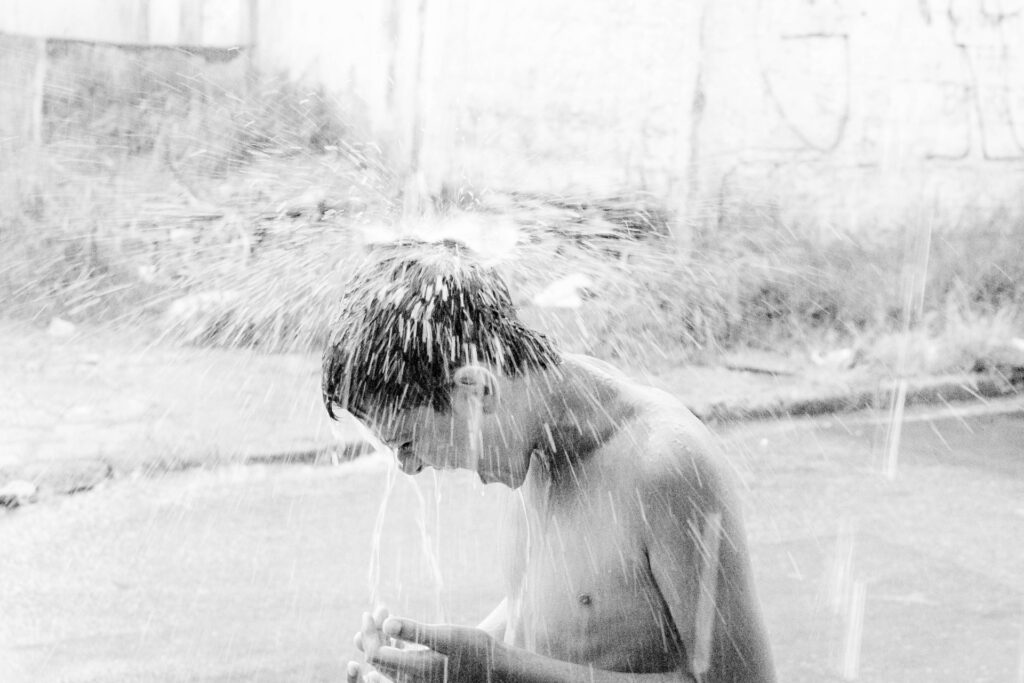In the quest for better health and weight management, researchers have uncovered an intriguing connection between cold exposure and the activation of Brown Adipose Tissue (BAT), commonly known as brown Fat. Unlike its counterpart, white fat, which stores excess calories, brown fat has gained attention for its ability to burn calories and promote Cardiometabolic Health. In this article, we explore the fascinating concept of activating brown fat through short-term cold exposure and its potential benefits.

Understanding Short-Term Cold Exposure
What is Brown Fat
Brown fat is a specialized type of fat that generates heat by burning calories. It contains a higher concentration of Mitochondria, which are responsible for producing energy. Unlike white fat, which primarily serves as an energy store, brown fat plays a significant role in thermogenesis, contributing to increased energy expenditure.
The Role of Cold Exposure
Short-term cold exposure has emerged as a powerful stimulus for activating brown fat. When exposed to cold temperatures, the body’s sympathetic nervous system releases norepinephrine, a neurotransmitter that triggers the activation of brown fat cells. Cold showers, ice baths, or spending time in cold rooms are commonly employed methods for inducing cold exposure and initiating brown fat activation.
Boosting Metabolic Health
One of the key benefits associated with brown fat activation is its potential to improve metabolic health. Increased energy expenditure resulting from activated brown fat can aid in weight management and even contribute to weight loss. Studies have shown that individuals with higher amounts of active brown fat tend to have healthier body weight and lower body mass index (BMI).
Enhancing Glucose Metabolism and Insulin Sensitivity
Brown fat activation has also been linked to improved glucose metabolism and insulin sensitivity. Research suggests that brown fat may help regulate blood sugar levels by assisting in the uptake and utilization of glucose. This effect could have significant implications for individuals at risk of or diagnosed with type 2 diabetes or metabolic syndrome.
Impact on Lipid Profile
Another intriguing aspect of brown fat activation is its potential influence on lipid metabolism. Studies have indicated that activating brown fat can lead to favorable changes in lipid profiles, including reduced levels of triglycerides and LDL cholesterol (often referred to as “bad” cholesterol) while increasing HDL cholesterol (often referred to as “good” cholesterol). These changes contribute to a healthier lipid balance and cardiovascular well-being.
Other Factors Influencing Brown Fat Activation:
While cold exposure is a primary method for activating brown fat, other factors can also influence its activation. Regular exercise, a healthy diet, and specific medications have been found to modulate brown fat activity. Incorporating physical activity and consuming a balanced diet rich in whole foods can complement the effects of cold exposure and optimize brown fat activation.
The activation of brown fat through short-term cold exposure presents an exciting avenue for promoting cardiometabolic health. Its ability to burn calories, improve glucose metabolism, enhance insulin sensitivity, and positively influence lipid profiles makes it a compelling target for individuals seeking to optimize their overall well-being. However, it is essential to consult with healthcare professionals before embarking on any new health regimen. By incorporating cold exposure, exercise, and a healthy lifestyle, individuals can harness the potential of brown fat activation to support their journey toward optimal cardiometabolic health.
Remember, while the concept of cold exposure and brown fat activation shows promise, further research is still ongoing. As our understanding deepens, we can unlock even more insights into the incredible benefits that activating brown fat can offer for individuals striving for improved health and wellness.
Methods to Activate Short-Term Cold Exposure
Cold Showers:
Taking cold showers is a simple and accessible way to expose your body to cold temperatures. Start by gradually reducing the water temperature to a comfortably cold level and then increase the duration over time. Begin with shorter durations and gradually work your way up to longer exposures.
Ice Baths:
If you’re up for a more intense cold exposure experience, you can try taking ice baths. Fill a bathtub with cold water and add ice cubes to achieve the desired temperature. Submerge yourself in the water for a short period, typically a few minutes. It’s essential to listen to your body and gradually increase the duration as you become more accustomed to the cold.
Cold Water Immersion:
If ice baths seem too extreme, you can still benefit from cold water immersion. Find natural bodies of cold water, such as lakes, rivers, or the ocean, and take a dip. Swim or immerse yourself in the cold water for a short duration, allowing your body to experience the cold temperature.
Cold Room or Cryotherapy:
Some specialized facilities offer whole-body cryotherapy, where you enter a chamber that exposes your body to extremely cold temperatures for a short duration, typically around 2-3 minutes. These facilities often use liquid nitrogen or refrigerated air to achieve the desired coldness. It’s important to follow the guidelines and instructions provided by the facility and consult with a healthcare professional if you have any underlying health conditions.
Outdoor Cold Exposure:
Embrace the cold outdoors by dressing appropriately and spending time in colder environments. Take a walk or engage in outdoor activities during cooler weather conditions, exposing your body to the natural coldness. Just ensure you’re dressed adequately to protect yourself from extremely cold temperatures.
Potential Adverse Effects of These Methods
Hypothermia
Prolonged exposure to extremely cold temperatures, especially in ice baths or cryotherapy chambers, can increase the risk of hypothermia. Hypothermia occurs when the body loses heat faster than it can produce, leading to a dangerously low body temperature. To prevent this, it’s crucial to monitor your exposure time, start with shorter durations, and gradually increase as tolerated.
Frostbite
Exposing your skin to extreme cold without proper protection can result in frostbite, which occurs when the skin and underlying tissues freeze. To avoid frostbite, ensure that you dress appropriately, cover exposed skin, and limit the duration of cold exposure.
Respiratory Issues
Cold air inhalation during cold exposure may trigger respiratory symptoms in individuals with pre-existing conditions such as asthma or chronic obstructive pulmonary disease (COPD). If you have respiratory conditions, it’s advisable to consult with your healthcare provider before attempting cold exposure methods.
Cardiovascular Effects
Cold exposure can cause temporary constriction of blood vessels, potentially increasing blood pressure. Individuals with cardiovascular conditions, such as hypertension or heart disease, should consult with their healthcare provider to determine if cold exposure is safe for them.
Discomfort or Psychological Impact
Cold exposure can be uncomfortable and challenging, especially for individuals who are not accustomed to it. Some people may experience discomfort, anxiety, or psychological stress during cold exposure. It’s essential to listen to your body, start with gradual exposure, and discontinue if you feel excessive distress or discomfort.
It’s recommended to consult with a healthcare professional before attempting any cold exposure methods, especially if you have underlying health conditions or concerns. They can provide personalized guidance based on your individual circumstances and help you determine the appropriate approach to cold exposure while minimizing potential risks.
Professionally Monitored Short-Term Cold Exposure techniques
Professionally monitored short-term cold exposure techniques provide a controlled and supervised environment to ensure safety and maximize the benefits of cold exposure. Here are some examples of professionally monitored methods:
Cryotherapy Centers:
Cryotherapy centers offer whole-body cryotherapy sessions in a controlled setting. Trained professionals guide you through the process, ensuring the correct exposure duration and monitoring your well-being throughout the session. Liquid nitrogen or refrigerated air is used to cool the cryotherapy chamber to extremely cold temperatures, typically around -110°C (-166°F). These facilities prioritize safety and provide guidelines to follow for an effective and safe experience.
Medical Facilities:
Some medical facilities, particularly those specializing in rehabilitation or sports medicine, may offer medically supervised cold exposure sessions. These sessions involve the use of specific equipment or techniques, such as localized cold therapy or temperature-controlled chambers. Medical professionals closely monitor the process, taking into account individual needs and any existing health conditions.
Sports Science and Research Institutions:
Universities, research institutions, and sports science centers often conduct studies and experiments related to cold exposure. These facilities may offer supervised cold exposure protocols as part of their research studies or performance optimization programs. Trained professionals oversee the sessions, collecting data and ensuring participant safety.
Rehabilitation Centers
In certain rehabilitation settings, cold exposure techniques may be employed as part of the recovery process. Trained therapists or healthcare professionals supervise and guide patients through controlled cold exposure methods tailored to their specific rehabilitation needs. These professionals monitor patients’ responses, adjust the parameters accordingly, and provide the necessary support throughout the session.
When opting for professionally monitored short-term cold exposure techniques, you benefit from the expertise of trained individuals who prioritize safety and ensure optimal conditions. They can guide you through the process, monitor your well-being, and address any concerns or discomfort you may experience. Working with professionals in these settings can provide peace of mind and enhance the effectiveness of your cold exposure experience.
Remember to discuss any existing health conditions or concerns with the professionals overseeing the sessions. They can adapt the protocols to suit your needs and ensure your safety throughout the process.
You May Also Like:
The Fascinating Science of Mitochondria: The Powerhouses of the Cell


